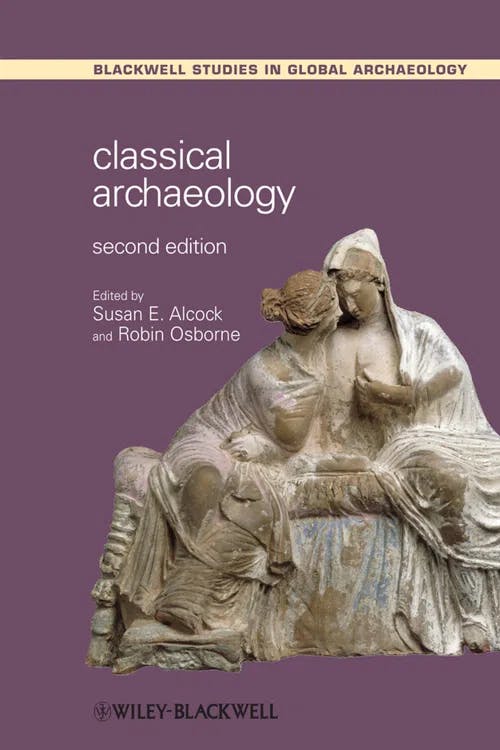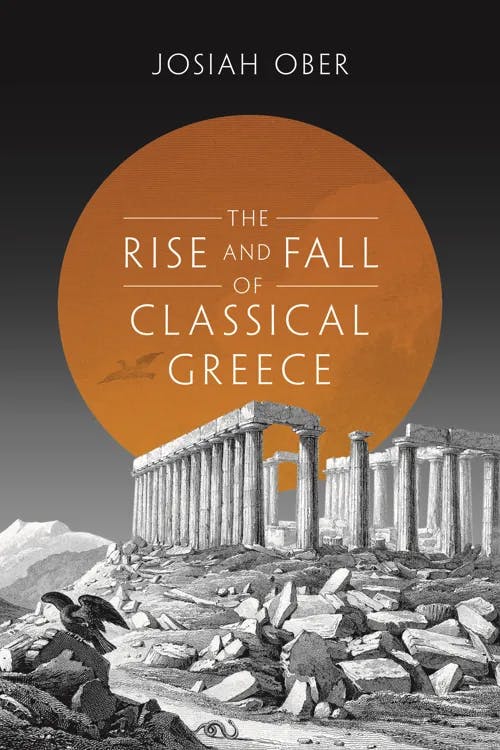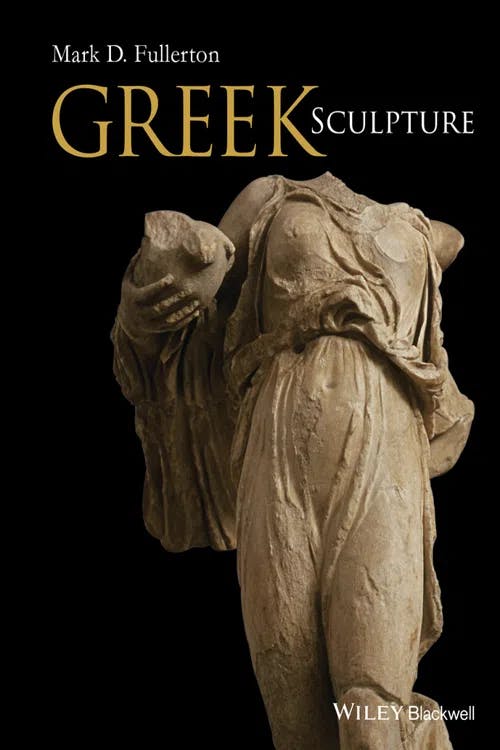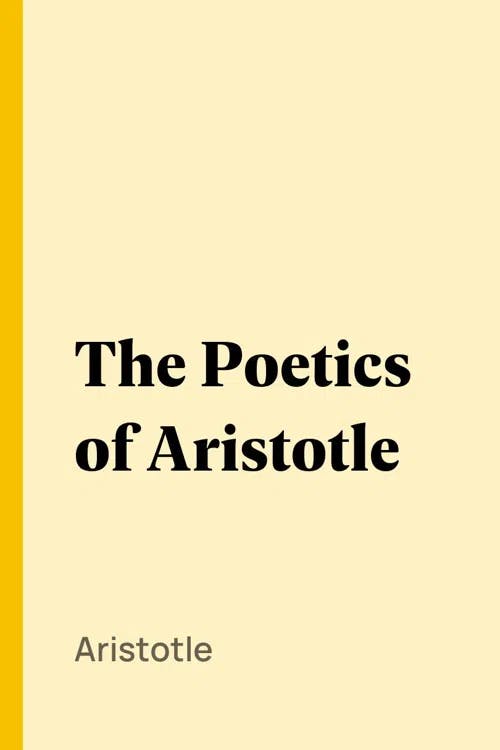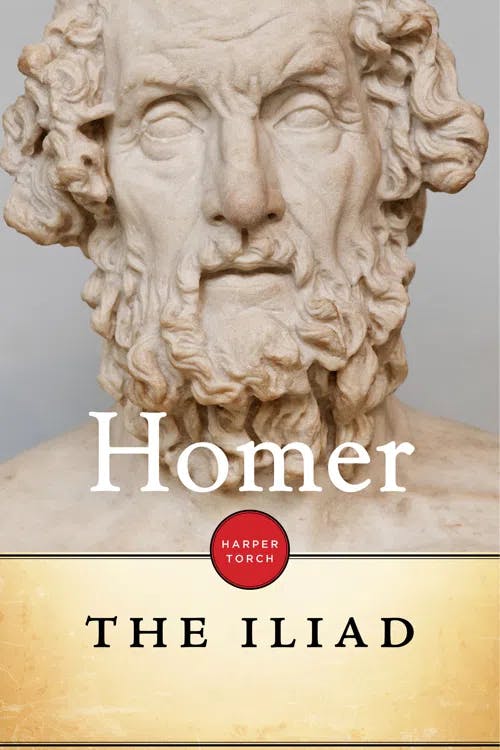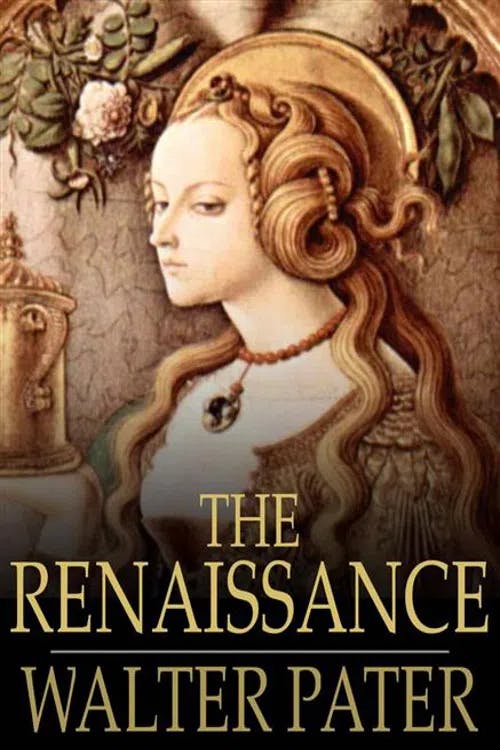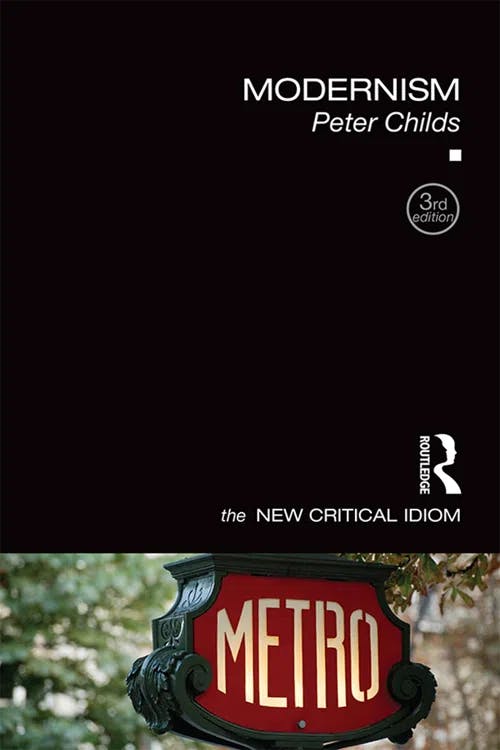What is Classicism?
PhD, Media Arts (Royal Holloway, University of London)
Date Published: 07.12.2023,
Last Updated: 24.01.2024
Share this article
Defining classicism
The aesthetic of classicism is something we are all likely familiar with. Museums and galleries around the world feature works of classicism: with great marble statues of smooth-skinned gods and goddesses, carved vases, and sturdy, straight-columned structures. These works, either from — or inspired by — ancient Greece and Rome, illustrate the distinct characteristics of classicism: precision, balance, harmony and polish. Classicism aims to represent things in their most beautiful, most ideal state.
“Classic,” “classical,” and “classicism” may seem like slightly different ways to say the same thing, however, each term has come to have a distinct definition. If something is “classic,” we usually mean it is archetypal of that thing; a classic car, film or album. As well as invoking the “classical music” of Mozart and Beethoven, “classical” is a term that refers to the historical period from around 800 c. BCE to 400 c. CE — when ancient Greece and Rome were dominant political and cultural forces. “Classical,” here, will be used to describe this time period and the Greco-Roman cultural work that came out of it. Finally, when we say “classicism” in an art history context, we refer to a set of aesthetic and intellectual principles that are represented by (and later inspired by) the period of classical antiquity. Classicism describes the commitment to the standards of beauty, art, and philosophical thought established in the classical era — standards that have been held in high esteem and revived throughout Western history.
In Classical Archaeology, Susan E. Alcock and Robin Osborne touch on classicism’s immense implications:
As Alcock and Robin point out, classicism does not exclusively refer to the art and culture of the classical era; it also describes a whole cultural attitude or approach. Classicism in the original, classical Greco-Roman sense, however, was only so named retrospectively in the seventeenth century.
The classical world has exercised such an influence over Western aesthetic standards that, in some ways, we have spent the better part of the last two thousand years either trying to recreate its beauty, or override its dominance. But how did classicism come to have such aesthetic authority? And how did these aesthetic standards come to be? The following study guide will begin to answer these questions and unpack the famously broad category of classicism.
Classical antiquity
Although classicism tends to group the contributions of ancient Greece and Rome together, they represent slightly different classical aesthetics and points in the timeline of antiquity.
Ancient Greece
After its victory against Persian invasion in 500 BCE, Greece was seen to represent the height of cultural activity. As Josiah Ober asserts in The Rise and Fall of Classical Greece, ancient Greece has since become considered the touchstone of
Huge developments in philosophy, science, mathematics, art, and architecture took place at this time, and “a substantial part of the Greek population experienced relative prosperity” (Ober, 2015). This economic and intellectual upsurge meant that Greece could build huge columned temples, like the Parthenon in Athens, beautiful ceramics, and great marble statues. Advances in mathematics brought a new emphasis on symmetry, proportion and balance to architecture and art, contributing greatly to the classicist aesthetic.
Ancient Greek philosophy made one of the greatest intellectual contributions of this classical period, with Socrates, Plato, and Aristotle being among its most famous figures. Influential theories include Stoicism, Plato’s theory of Forms, Aristotle’s virtue ethics, and many others. Ancient Greek philosophers developed systems of rationalism, idealism, metaphysics, ontology, epistemology, and logic that formed the foundation of decades of philosophical activity to follow.
Classical Greek art particularly reflected the pursuits of idealism, with its desire to grasp what a perfect form or example of a thing might be. Rationalism, a philosophy that emphasized the intrinsic power of the mind and the universality of logical concepts in elucidating reality, can similarly be observed in classical artistic practices. The appeal to formal ideals and the application of mathematics and geometry to produce the height of aesthetic beauty was the philosophical foundation of classicism. This intellectual approach produced works of art that were precise, structural, and smooth for an aesthetic experience that illuminated the nature of the mind, the world, and the realm of the gods.
Ancient Rome
After the Roman conquest of Greece in 146 BCE, Rome assimilated the revered Greek aesthetic into their own. This marked the beginning of the wide dissemination of classical ideas. As David Pickering explains in Ancient Greece,
Building on Greek advances in mathematics, geometry, and architecture, Rome achieved staggering heights of engineering. Using concrete which was even more durable than what we use today, Rome was able to construct buildings that had the same grandeur as the Grecian Parthenon but with more structural support. This can be seen in Rome’s famous Pantheon. Immediately, the Parthenon and Pantheon look like similar structures; both were built as temples with a columned portico. With the Roman Pantheon, however, this façade leads to a great dome, made possible by the durable combination of materials. Even today, it remains the largest unsupported concrete dome in the world.
The ancient Roman aesthetic is associated with luxury, ostentatious monuments to prominent figures, and general displays of imperial power and wealth. Marble portrait busts became a popular way to pay homage to Roman leaders. These were often more naturalistic than Grecian sculptures, with special attention given to depicting realistic facial features. While classical Greek sculpture hoped to depict the idealized image of deities, Roman sculpture included details like wrinkles and facial expressions for a more lifelike human impression.
These are just a few of the features that make the classicism of ancient Rome distinct from that of ancient Greece, and they illustrate the way in which both influences combined to make up the authoritative artistic style of classicism.
Examples of classical art
There are many iconic examples of classical art, despite how far back in time these pieces were conceived. Usually surviving in the form of buildings, literature, and sculpture, these emblems of classicism provide ongoing wonder and insight into the sophisticated societies of ancient Greece and Rome.
The Dying Gaul (230–220 BCE) is a classic example of an ancient Roman statue. Thought to be a copy of a lost Greek sculpture originally made in bronze, it depicts a fallen Galatian warrior, representing Greece’s triumph over the Celtic invasion in the 3rd century BCE.
The sculptural subject is rendered highly realistically, with close attention to anatomical detail that gives the hard marble the appearance of skin. He is poised in his demise, vulnerable and naked but smooth, beautiful, and serene. This illustrates the theme of stoicism, prominent in classical art. As Mark D. Fullerton notes in Greek Sculpture,
The Dying Gaul displays a balance between the strength and delicacy of corporeal mortality with admirable attention to realism. For both the Greeks and the Romans, the sculpture represented their proud defeat of the Celts and, more significantly still, the triumph of advanced culture and civilization over what they considered primitive barbarism.
The frescoes in what is referred to as “the Villa of the Mysteries” are another famous example of classical art. Found in a Roman villa (dating back to the 1st century BCE) on the outskirts of the preserved city of Pompeii, the painted walls show life-size Gods, people, and animals engaging in strange activities and rituals. Classicist scholar Mary Beard describes some aspects of the chaotic scene:
Beard summarizes the experience of the frescoes in the Villa of Mysteries as “completely baffling” (2010). Despite the perplexing scenes depicted in these frescoes, they have become emblematic of the ancient Roman aesthetic: intricate displays of wealth with richly coloured and ornamented tableaus that tell complex stories, frozen in time. These frescoes are now, as Beard points out, so mainstream as to be reproduced on “modern souvenirs, from ashtrays to fridge magnets” (2010). This ancient Roman painting style exuded significant influence over the trajectory of Western art, with its characteristics found in art of the Middle Ages and Renaissance.
Classical literature forms another key part of classicism’s influence. Ancient writings from this time, like that of Homer (900–800 BCE), Sophocles (497/6–406/5 BCE), Cicero (106–43 BCE), and Aristotle (384–322 BCE) continue to be a source of literary inspiration. Ancient literature was organized into well-defined generic categories — epic poetry, lyric poetry, drama, rhetoric, and prose — each with an identifiable structure and style. Using metrical patterns to create a certain effect, this literature displayed the same precision and attention to form as the fine arts. In The Poetics (c. 335 BCE), Aristotle proposes that the primary function of literature is mimetic; mirroring reality and experience. He continues:
Here, Aristotle emphasizes the way that classical literature should pursue precise mimesis, regularity and balance. To take just one famous example of this, Homer writes in the the Iliad:
Not only does this exemplify the themes of heroism and morality, and the exaltation of power in ancient texts, but the meter and rhyming scheme illustrated the importance of form and structure.
Classical art was in large part a celebration of “high” civilization. It was ordered and structured, beautiful and refined. Thus, the classicist aesthetic has remained emblematic of a particular set of societal values that have continuously come in and out of fashion since the classical period.
The rise of classicism
Even as art changed to mirror the changes in culture and society, many aspects of the classicist style remained, and its influence has been scattered throughout artistic activity since.
The rise of Christianity saw the destruction of many classical cultural artworks, monuments and temples, mostly due to their polytheistic or secular references. In medieval Europe, the pursuit of realism, harmony and ideal beauty was replaced by rougher, two-dimensional artwork of moral, monotheistic subject matter. After the Middle Ages, however, came the major revival of classicism: the Renaissance.
The Renaissance
The Renaissance saw one of the most significant revivals of classical ideas, and it provides many examples of the importance of classicism. Alongside Mannerism, classicism was key in the epochal Renaissance aesthetic. This return to classical antiquity was partly brought about by the rediscovery of ancient Latin and Greek literature, which were key in shifting the culture of the Dark Ages and precipitating the advent of humanist thought and religious doubt. As Walter Pater describes in The Renaissance,
Renaissance artists such as Leonardo Da Vinci (1452–1519) and Sandro Botticelli (1445–1510) painted masterpieces, such as Botticelli’s The Birth of Venus (1485), which replicated classical subject matter in a way that exemplifies the symmetry, balance, and restraint of classicism. The subjects of Renaissance art are often posed, static, smooth, and unblemished, resembling the statues of antiquity. Michelangelo’s (1475–1564) David (1501–04) is emblematic of the classical Renaissance. The sculpture of the biblical figure David was carved from a single block of marble. He stands on a pedestal, his body smooth and still, and his contrapposto pose resembles those of the classical Greco-Roman gods. It is works like this that mark the Renaissance as the first major revival of classicism, and set the stage for later classicist movements to come.
The Enlightenment
The Enlightenment was characterized by a flurry of new thought which particularly followed the principles of rationality, reason and empiricism. This period of time also saw the rise of neoclassicism, an art movement characterized by a return to the standards of classicism. Advances in science and technology facilitated the excavation of Herculaneum and Pompeii, and the discovery of, and new interest in, artifacts of the ancient world. This initiated an aesthetic turn in the 17th and 18th centuries back to the subject matter of mythology and the triumphs of civilization, the appreciation of precision and clarity, and the philosophy of rationalism and idealism.
The Enlightenment also saw the surfacing of Romanticism, a movement that opposed the austere and formal aesthetic standards of classicism in favor of an emotive and unruly form of expression. While classicism and Romanticism are often understood as being diametrically opposed, some literary scholars and art historians insist that classicism and Romanticism maintain an important cultural balance between overly expressive impulses and aesthetic control.
Modernism
Once more, a surge of classicist activity took place in modernity. Poetic tastes like those of T. E. Hulme, Ezra Pound, and T. S. Eliot — all part of the imagist movement — were equal parts experimental and indebted to the standards of antiquity. As Peter Childs asserts in Modernism,
While some British modernist figures, like the imagists, took to the descriptive and harmonious style of classicism, others, like the surrealists in Britain, reflected the imaginative and introspective techniques of the Romantics — continuing the aesthetic debate between the two movements.
Closing thoughts
By now, we have seen that classicism has been one of the most prevalent aesthetic styles in art history. Although classicism has its adversaries and has fallen in and out of artistic style, its importance in Western culture has never waned. The classical world featured such prolific and abundant artistic activity that its subsequent influence is unavoidable. Today, aspects of classicism still feature in art, literature, and architecture. New classicism is a term used to describe new builds that emulate classical architecture. For example, the Maitland Robinson Library in Downing College, Cambridge was built in 1992 and exhibits the geometric shapes and bright stone associated with classical structures. Even more recently, in 2018, King’s College London hosted an exhibition called “The Classical Now” which explored the hold that classicism seems to have on the art world. Displaying recognizable classicist forms in new, experimental ways, this exhibition provides just one example of classicism’s contemporary relevance.
Wherever we see these familiar imitations of classical iconography — from grand Doric columns to poised marble sculptures — we are reminded of classicism’s tremendous impact and the historical elucidation it offers.
Further reading on Perlego
The Ideology of Classicism (2011) by Nicolas Wiater
Antiquity (2014) by Frederick G. Naerebout and Henk W. Singor
Ancient Greece from Homer to Alexander (2011) by Joseph Roisman and J. C. Yardley
Cicero, Classicism, and Popular Culture by Marshall Fishwick
Antiquity (2018) by Christopher Tadgell
Bibliography
Alcock, S. E. and Osborne, R. (eds.) (2012) Classical Archaeology. 2nd edn. Wiley. Available at: https://www.perlego.com/book/1002350/classical-archaeology-pdf
Aristotle (1999) The Poetics of Aristotle. Perlego. Available at: https://www.perlego.com/book/1819643/the-poetics-of-aristotle-pdf
Beard, M. (2010) Pompeii. Profile. Available at: https://www.perlego.com/book/3707801/pompeii-the-life-of-a-roman-town-pdf
Childs, P. (2016) Modernism. 3rd edn. Taylor and Francis. Available at: https://www.perlego.com/book/1561261/modernism-pdf
Fullerton, M. D. (2016) Greek Sculpture. Wiley. Available at: https://www.perlego.com/book/995272/greek-sculpture-pdf
Homer (2014) Iliad. HarperCollins Canada. Available at: https://www.perlego.com/book/601075/iliad-pdf
Ober, J. (2015) The Rise and Fall of Classical Greece. Princeton University Press. Available at: https://www.perlego.com/book/737966/the-rise-and-fall-of-classical-greece-pdf
Pater, W. (2010) Renaissance. The Floating Press. Available at: https://www.perlego.com/book/1303027/renaissance-studies-of-art-and-poetry-pdf
Pickering, D. (2013) Ancient Greece. HarperCollins Publishers. Available at: https://www.perlego.com/book/702395/ancient-greece-pdf
PhD, Media Arts (Royal Holloway, University of London)
Aoiffe Walsh has a PhD in Media Arts from Royal Holloway, University of London. With a background in film studies and philosophy, her current research explores British literary modernism, with a particular focus on surrealism between the wars. She has lectured and published pieces on documentary and film theory, film history, genre studies and the avant-garde.

